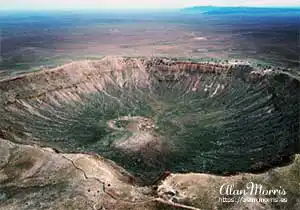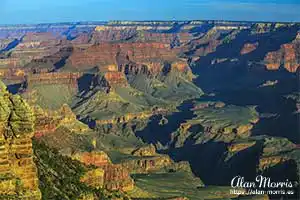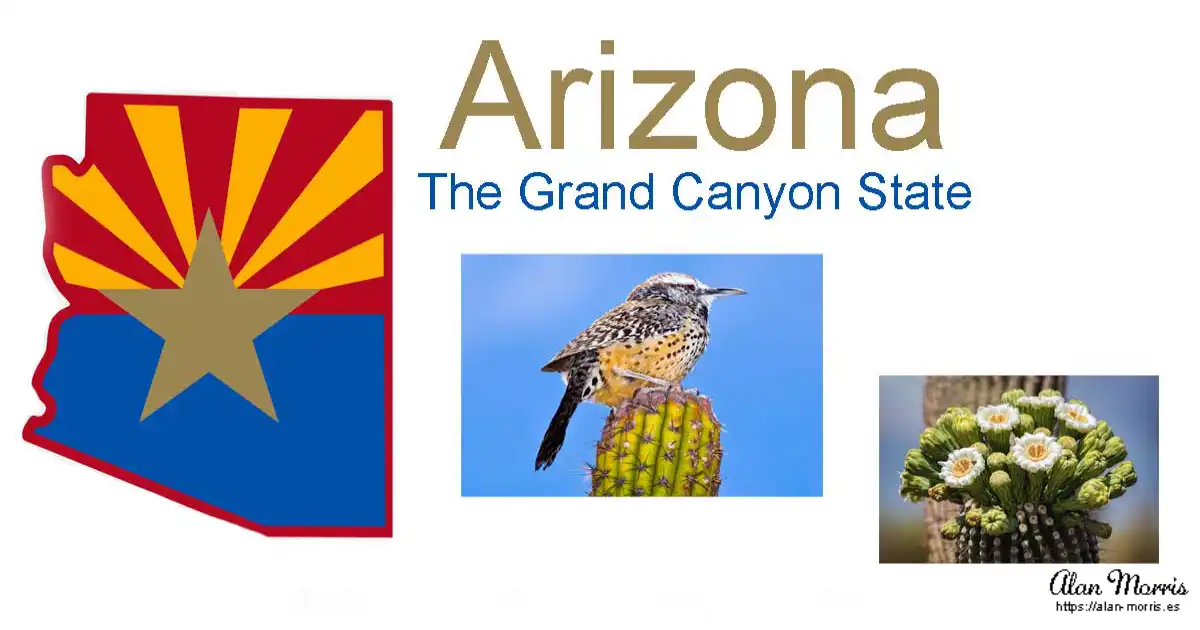On our drive across America, we travelled through Arizona. It was a beautiful state that, at the time, I probably didn't appreciate as much as I would now if I were to do this trip again.
We stopped at a few places as we crossed Arizona, and these are the places that I can remember stopping at. If any other places come back to me, I will add them to this page.
About Arizona.
Arizona is a state in the Southwestern United States. It is the 6th-largest state and the 14th-most-populous of the 50 states. Its capital and largest city is Phoenix. Arizona is part of the Four Corners region, with Utah to the north, Colorado to the northeast, and New Mexico to the east. Its other neighbouring states are Nevada to the northwest, California to the west and the Mexican states of Sonora and Baja California to the south and southwest.
Arizona is the 48th state and last of the contiguous states to be admitted to the Union, achieving statehood on February 14, 1912. Historically, it was part of the territory of Alta California in New Spain, but it became part of independent Mexico in 1821. After being defeated in the Mexican–American War, Mexico ceded much of this territory to the United States in 1848.
Meteor Crater.
This was a place my dad wanted to visit, and the only thing I remember about it was how bored my sister and I were with the big hole in the ground. How things change as we get older. I would be fascinated to go back and visit it now.
About the Meteor Crater.
 Meteor Crater, Arizona. The Meteor Crater or Barringer Crater is a meteorite impact crater about 37 miles east of Flagstaff and 18 miles west of Winslow in the desert of northern Arizona. The site had several earlier names, and fragments of the meteorite are officially called the Canyon Diablo Meteorite.
Meteor Crater, Arizona. The Meteor Crater or Barringer Crater is a meteorite impact crater about 37 miles east of Flagstaff and 18 miles west of Winslow in the desert of northern Arizona. The site had several earlier names, and fragments of the meteorite are officially called the Canyon Diablo Meteorite.
The Meteor Crater lies at an elevation of 5,640 feet above sea level. It is about 3,900 feet in diameter, some 560 feet deep, and is surrounded by a rim that rises 148 feet above the surrounding plains. The centre of the crater is filled with 690–790 feet of rubble lying above the crater bedrock.
The Meteor Crater is a popular tourist destination with roughly 270,000 visitors per year. A family company, the Barringer Crater Company, owns the crater. The Meteor Crater is an essential educational and research site, and it was used to train Apollo astronauts. It continues to be an active training site for astronauts. The Meteor Crater Visitor Center sits on the north rim of the crater. It features interactive exhibits and displays about meteorites, asteroids, space, the Solar System, and comets, including the American Astronaut Wall of Fame, a 1,406 lb meteorite found in the area, and meteorite specimens from the Meteor Crater that can be touched. Formerly known as the Museum of Astrogeology, the Visitor Center includes a Discovery Center and Space Museum, a movie theatre, a gift shop, and observation areas with views inside the rim of the crater.
The Grand Canyon.
 The Grand CanyonI remember going to the Grand Canyon on this trip because we flew over the canyon in a helicopter on a 40-minute tour. We stayed in a hotel near the South Rim, which I think was the Yavapai Lodge. I remember taking a short walk around the rim and a short way down into the Canyon. For a long time, I had a very blurred and out-of-focus photo of my dad, mum and sister walking down a path in the Grand Canyon, but I can no longer find it. I also remember thinking how cool it would be to ride a horse in the Grand Canyon, but when we asked about it, there was a two-year waiting list so we couldn't go.
The Grand CanyonI remember going to the Grand Canyon on this trip because we flew over the canyon in a helicopter on a 40-minute tour. We stayed in a hotel near the South Rim, which I think was the Yavapai Lodge. I remember taking a short walk around the rim and a short way down into the Canyon. For a long time, I had a very blurred and out-of-focus photo of my dad, mum and sister walking down a path in the Grand Canyon, but I can no longer find it. I also remember thinking how cool it would be to ride a horse in the Grand Canyon, but when we asked about it, there was a two-year waiting list so we couldn't go.
While there, we were also told the reason that the horses are used at the base of the Canyon, but the tourists who trek down into the Canyon use donkeys or mules. The reason we were given was that horses will do what they are told to do. If you tried to get the horse to jump over the side, it may well jump. Donkeys and Mules, however, are very stubborn, have tremendous respect for their mortality and will not go over the edge. Hence, the reason tourists ride Donkeys or Mules down into the Canyon and Horses are used at the base of the Canyon.
About the Grand Canyon.
The Grand Canyon is a steep-sided canyon carved by the Colorado River in Arizona. It is 277 miles long, up to 18 miles wide and in places around a mile deep.
The canyon and adjacent rim are contained within Grand Canyon National Park, the Kaibab National Forest, the Grand Canyon–Parashant National Monument, the Hualapai Indian Reservation, the Havasupai Indian Reservation and the Navajo Nation.
Nearly two billion years of Earth's geological history have been exposed as the Colorado River and its tributaries cut their channels through the layers of rock while the Colorado Plateau was uplifted. For thousands of years, the area has been continuously inhabited by Native Americans, who built settlements within the canyon and its many caves.
